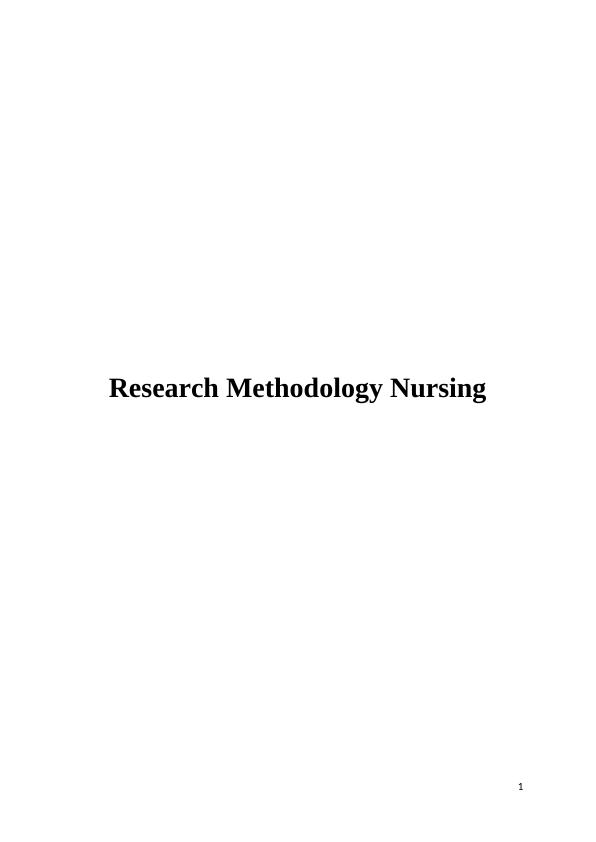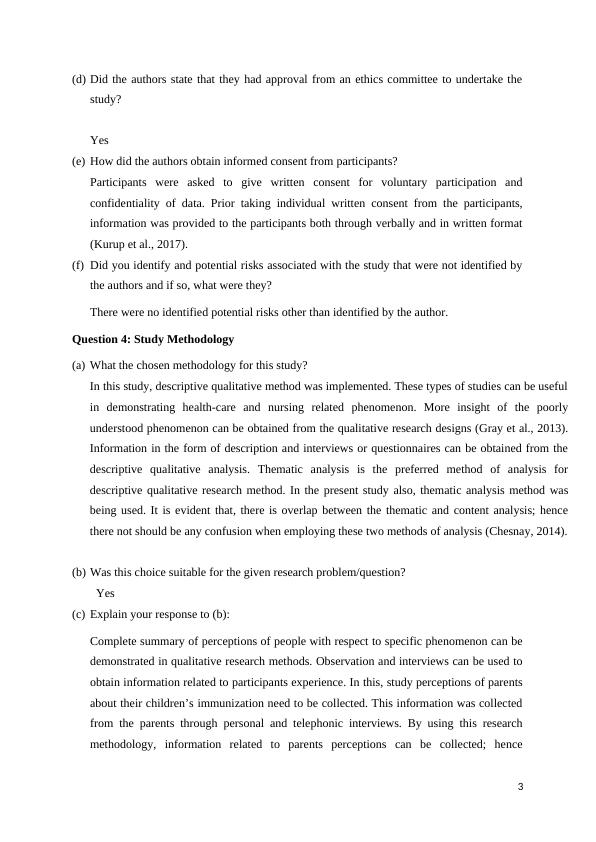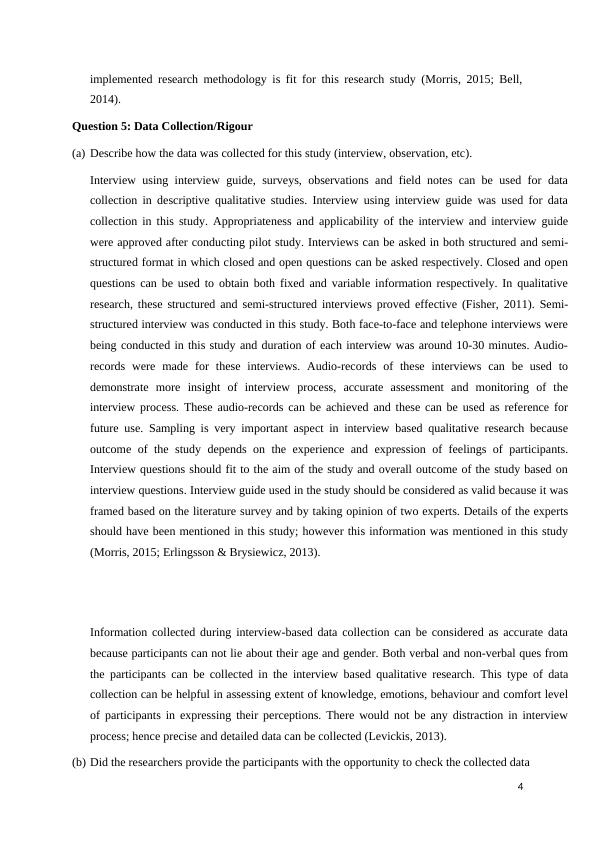Assessing the Quality of Qualitative Research in Nursing: A Study on Parental Perceptions of Child Vaccination in Singapore
Assessment 2 for the Research Methodology course at the University of South Australia involves assessing the quality of quantitative or qualitative research on the topic of immunisation uptake in children.
13 Pages4216 Words371 Views
Added on 2023-06-11
About This Document
This study assesses the quality of qualitative research in nursing by exploring parental perceptions of child vaccination in Singapore. The study methodology, data collection, and research findings are analyzed to determine the applicability of the outcomes to evidence-based practice. The study had a clearly stated purpose and research question, was relevant to nursing/midwifery practice, and had approval from an ethics committee. The chosen methodology was suitable for the research problem/question, and data collection was rigorous. The study had limitations due to a small sample size and single site location. The outcomes of the study are of level VI and should not be used to inform evidence-based practice.
Assessing the Quality of Qualitative Research in Nursing: A Study on Parental Perceptions of Child Vaccination in Singapore
Assessment 2 for the Research Methodology course at the University of South Australia involves assessing the quality of quantitative or qualitative research on the topic of immunisation uptake in children.
Added on 2023-06-11
ShareRelated Documents
End of preview
Want to access all the pages? Upload your documents or become a member.
Assessing the Quality of Qualitative Research in Nursing: A Study on Parental Perceptions of Child Vaccination in Singapore
|13
|3986
|338
Tool for critiquing QUALITATIVE research
|7
|3731
|59
Tool for Critiquing Qualitative Research
|11
|4223
|66
Nursing Research Appraisal Assignment
|15
|3702
|46
Tool for Critiquing Qualitative Research
|10
|4695
|13
Tool for Critiquing Quantitative Research
|8
|2734
|95




